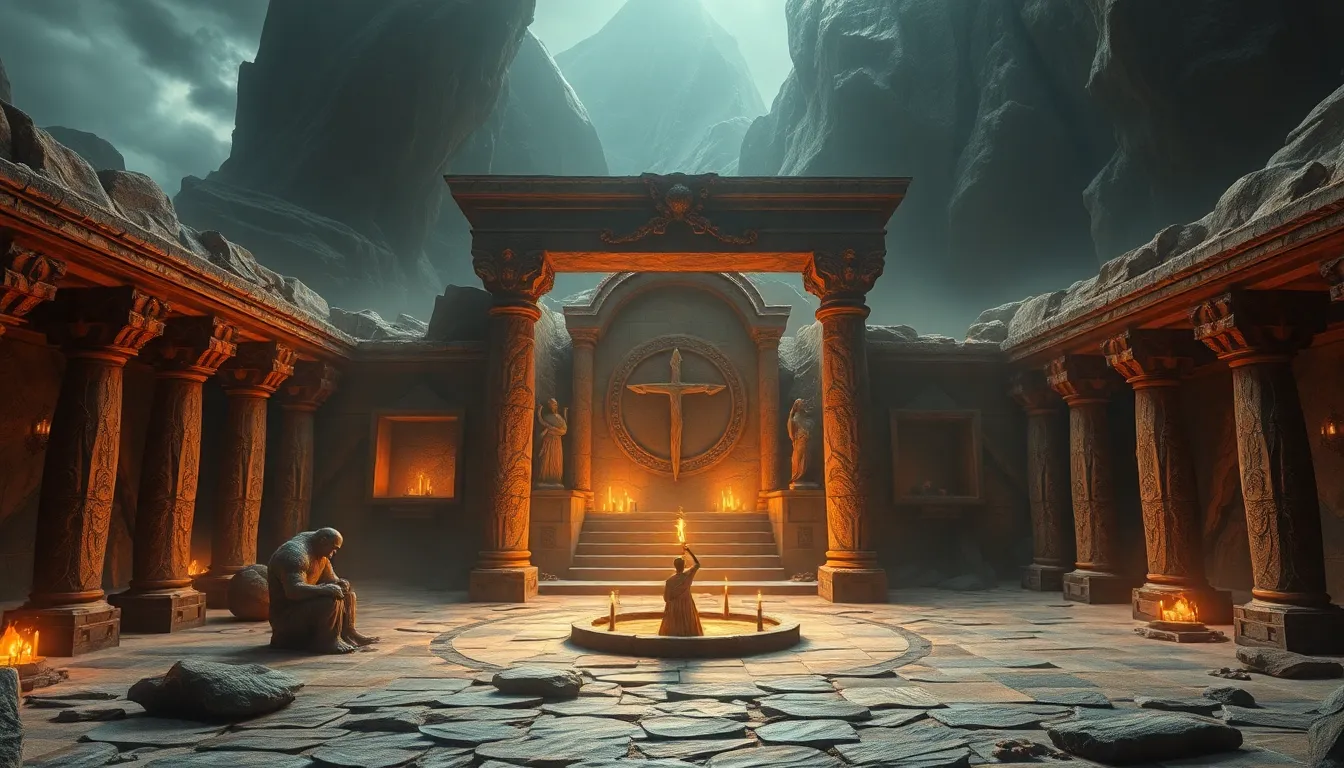The Sacred Altar: Where Myths Were Born
1. Introduction: Defining the Sacred Altar
The concept of a sacred altar transcends cultural boundaries, serving as a focal point for spiritual and religious practices across various civilizations. An altar is typically a raised structure or platform where offerings, sacrifices, and rituals are performed to honor deities or spirits. These spaces embody profound significance in religious and mythological contexts, acting as a bridge between the mortal realm and the divine.
In many cultures, altars symbolize the presence of the sacred and the space where believers can communicate with the divine. Whether in temples, shrines, or homes, altars serve as the heart of religious practices, reinforcing community bonds and individual spirituality.
2. Historical Overview of Sacred Altars
The evolution of sacred altars can be traced back to prehistoric times when early humans may have designated specific spots for worship and offerings. Over time, these humble beginnings transformed into more elaborate structures as civilizations advanced. Archaeological discoveries have unearthed altars from various ancient cultures, revealing their significance throughout history.
- The ancient Egyptians built altars within their temples, used for offerings to gods such as Osiris and Ra.
- In Mesopotamia, ziggurats served as altars to worship deities, emphasizing the connection between heaven and earth.
- The Greeks and Romans constructed altars in public spaces, where citizens could participate in communal worship.
Key archaeological discoveries, such as the altars found in the ruins of ancient Pompeii and the ceremonial sites of the Maya, highlight the enduring importance of altars in human civilization.
3. Mythology and the Sacred Altar
Altars are intrinsically linked to the birth of myths in various cultures. They often serve as the backdrop for rituals that give rise to stories about gods, heroes, and the cosmos. The very act of making offerings at an altar can lead to the creation of narratives that explain natural phenomena, social customs, and human experiences.
For example, in ancient Greece, the myth of Prometheus stealing fire from the gods can be traced back to sacrificial rites performed at altars where fire played a central role. Such rituals not only honored the gods but also established foundational myths that shaped cultural identity and values.
4. Rituals and Offerings: The Altar as a Myth-Making Space
Common rituals performed at altars vary widely across cultures but often share similar themes of sacrifice, thanksgiving, and communion with the divine. These rituals can include:
- Animal or plant sacrifices to appease deities.
- Lighting candles or incense to symbolize prayers and intentions.
- Offering food and drink as a sign of respect and gratitude.
Each of these rituals contributes to the creation and perpetuation of myths, as they embody the beliefs and values of a culture. The outcomes of these rituals, often interpreted as divine responses, can lead to new myths or reinforce existing ones, creating a rich tapestry of cultural narratives.
5. Cultural Variations: Sacred Altars Across Civilizations
A comparative analysis of altars in major world religions reveals distinct features and functions. For instance:
- Hinduism: Altars, known as ‘mandirs’, are integral to worship, with elaborate rituals that often involve intricate offerings and ceremonies.
- Christianity: Altars in churches serve as the site for the Eucharist, representing the Last Supper and the sacrifice of Jesus.
- Indigenous beliefs: Altars may be created in nature, using natural materials to honor ancestors and spirits, reflecting a deep connection to the earth.
These variations underscore the adaptability of the altar concept while highlighting universal themes of spirituality and reverence.
6. The Symbolism of the Altar in Mythology
In mythology, altars symbolize the connection between the divine and the mortal, representing a sacred space where human beings can reach out to the gods. The altar acts as a physical manifestation of faith, embodying hope, sacrifice, and supplication. It often serves as a reminder of the fragility of life and the need for divine intervention.
The symbolic meanings associated with altars can include:
- Transformation: The altar is a place of change, where offerings are transformed into blessings.
- Connection: It symbolizes the link between the earthly and the spiritual realms.
- Community: Altars often serve as gathering places for communal worship and collective identity.
7. Literary Representations of Altars in Mythology
Altars have been depicted in various ancient texts and literature, serving as significant narrative devices. In Homer’s “Iliad,” altars are central to the rituals performed by the Greeks before battle, emphasizing the role of divine favor in human endeavors.
Case studies of specific myths that center around altars include:
- The story of Abraham and Isaac, where an altar becomes a symbol of faith and sacrifice.
- The myth of the Aztec sun god Huitzilopochtli, where altars play a crucial role in the rituals that sustain the sun’s journey across the sky.
8. Modern Interpretations of Sacred Altars and Myths
In contemporary spirituality, the relevance of sacred altars remains strong. Many modern practitioners draw inspiration from ancient practices, creating personal altars in their homes to facilitate spiritual connection and reflection. These altars often incorporate elements from various traditions, reflecting a more inclusive and diverse approach to spirituality.
Examples of modern rituals that draw inspiration from ancient practices include:
- Seasonal celebrations that honor nature and the cycles of life.
- Personal rituals for intention-setting, using altars to focus energy and manifest desires.
9. The Psychological Impact of the Sacred Altar
The presence of sacred altars can have a profound psychological impact on individuals and communities. They foster a sense of belonging and identity, reinforcing belief systems and collective memory. Altars can serve as places of solace, reflection, and community gathering, providing a space for individuals to connect with their spirituality and with each other.
Research has shown that engaging with sacred spaces can lead to increased feelings of peace, purpose, and connection to something greater than oneself, highlighting the significance of altars in human psychology.
10. Conclusion: The Enduring Legacy of the Sacred Altar
The sacred altar is not merely a physical structure; it is a powerful symbol of humanity’s quest for meaning, connection, and understanding of the divine. Throughout history, altars have played a crucial role in the creation of myths, shaping cultural narratives and community identities.
As we continue to explore spirituality in modern times, the concept of the sacred altar remains relevant, reminding us of our shared human experience and the enduring need to connect with the sacred. The legacy of altars, as myth-making spaces, continues to influence contemporary culture, spirituality, and our understanding of the divine.




